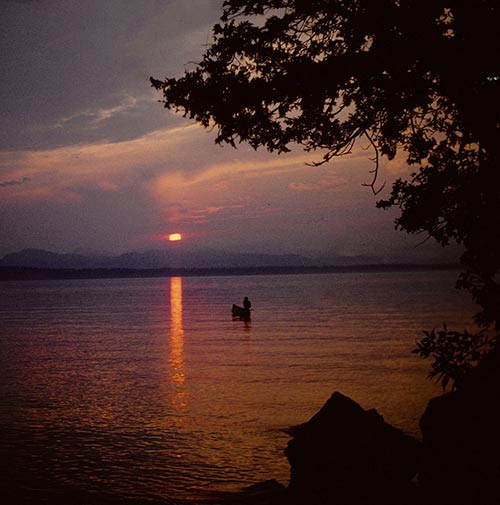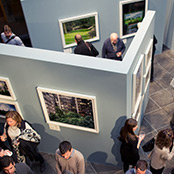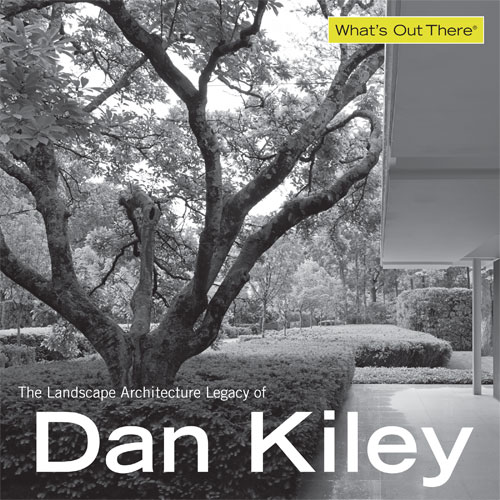Recollections
Cheryl Barton, FASLA, 2013
 Dan and I met in 1970, when I was a student at the Boston Architectural Center. After an undergraduate education in environmental art (aka fine arts + geology), I was pursuing ‘architecture outdoors’ and was not aware of landscape architecture as a distinct profession. One of my BAC instructors said “I have no idea what ‘architecture outdoors’ means, but you might want to contact an ‘architect’ I know in Vermont”. I wrote to Dan and soon arranged a visit to the Charlotte studio where we subsequently had a two hour conversation; our dialogue resonated with my nascent idea of making landscape visible as a device for raising environmental consciousness. Our initial conversation went something like this:
Dan and I met in 1970, when I was a student at the Boston Architectural Center. After an undergraduate education in environmental art (aka fine arts + geology), I was pursuing ‘architecture outdoors’ and was not aware of landscape architecture as a distinct profession. One of my BAC instructors said “I have no idea what ‘architecture outdoors’ means, but you might want to contact an ‘architect’ I know in Vermont”. I wrote to Dan and soon arranged a visit to the Charlotte studio where we subsequently had a two hour conversation; our dialogue resonated with my nascent idea of making landscape visible as a device for raising environmental consciousness. Our initial conversation went something like this:
CB: “Why all the orthogonal lines in your work?”
DK: “You have been working in environmental art, right?”
CB: “Right.”
DK: “Well, those orthogonal walkways and grids of trees make people see their environment – just as powerfully as does environmental art.”
CB: “And that ‘seeing’ elevates consciousness…”
DK: “Exactly.”
In 1970, ODK (Office of Dan Kiley) was located at Wings Point in Charlotte, Vermont in a rambling white clapboard farm house on a bluff overlooking Lake Champlain with a backdrop of the Adirondack Mountains. The studio was immersed in a vast landscape with a powerful presence – a constant reminder that we were part of the natural world. It was a culture of working hard and playing hard. Lunch time was set aside for volley ball and sailing in the spring and summer months; ice skating, ice boating and snow shoeing were the activities of choice in winter. Dan would often declare a ‘snow day’; all of us would head for the nearest ski slope, with the full knowledge that we would make up our design time the following weekend. If we stayed in the studio on a winter day, DK would prepare his usual lunch of canned Dinty Moore stew – with a splash of gin. One of my fair weather jobs was to take the rowboat out to meet visiting architects or clients who arrived on amphibious planes. Harry Weese and Edward Larrabee Barnes were memorable guests.
Dan was completely unpretentious and playful in everything he did – a refreshing change from the posturing architects and designers I had worked with in New York and Boston. The office ranged in size from 10 to 15 people, and included a secret weapon: Wally and Carol, the extraordinarily speedy and accurate drafting duo that produced our construction documents. Ian Tyndall, Peter Ker Walker, Henry Arnold, Peter Britz and Peter Berg were also teachers and mentors.
Dan’s fascination with ordinary cultural landscape elements was intriguing. He often insisted that we integrate an old orchard, a stone wall, a hedge or an existing gravel driveway into our modernist compositions. Our drawings were incredibly and, I think, deliberately naïve, as evidenced by the competition sections we prepared for the South Michigan Avenue Sculpture Garden and ongoing work for the Miller Garden.
Recently completed projects in the studio at the time were the Chicago Filtration Plant – infrastructure made visible and beautiful – and the Oakland Museum, a modern equivalent of Queen Hatshepsut’s Tomb – a superb integration of site and landscape. Both significantly influenced my design thinking. I became profoundly aware that there was an entire realm of spatial design that architects had largely ignored. It was, indeed, critically important to make landscape visible. Many of ODK’s projects evolved within a larger context where civil engineers controlled site grading and drainage; it became apparent to me that my future work would require the controlled and artful integration of natural systems with design geometries. Dan’s outwardly playful design approach involved a rigorous editing process, which informed my own approach to finding the most simple and intrinsic solution to each problem. I was also inspired to see that the life of a landscape architect could encompass art, music, travel and sheer delight in ‘the unexpected and the unserious’.
Working with DK was a life-changing experience. After my formative time as an apprentice, I entered Harvard Graduate school of Design in 1972, moving professionally from architecture to landscape architecture.
More Recollections...




